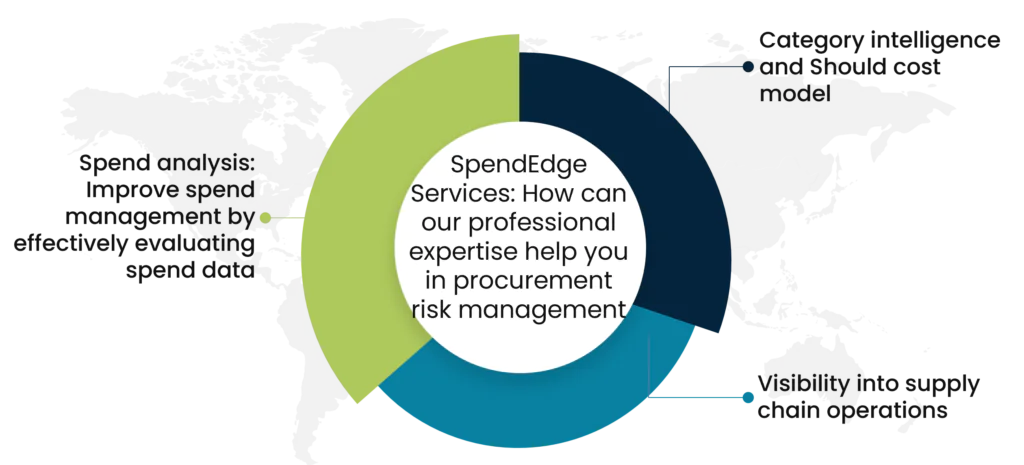Procurement risks arise when the purchasing or sourcing process of products, services or resources becomes unreliable. The COVID-19 pandemic has reminded many businesses of the impact these risks can have on business performance. In order to maintain the health and revenue of your business, procurement risks need to be well-managed in your supply chain. Additionally, your business may face risks associated with the procurement process from a vendor or partner, which may be out of their control.
Risk management is crucial in procurement for businesses to identify, assess, and mitigate potential threats that may disrupt the procurement process. By anticipating and addressing risks, organizations can safeguard against financial losses, project delays, and reputational damage. Effective risk management enables businesses to make informed decisions, enhance operational resilience, and ensure successful procurement outcomes. It also promotes transparency and compliance, fostering a more resilient and sustainable procurement environment in the ever-changing business landscape.
Top 3 challenges that can arise while managing risks in procurement
Inaccurate forecasts: supply chain operations
Accurately forecasting your supply chain needs is crucial to prevent overpaying for goods and services or being unable to acquire them when you need them most. Miscalculations can lead to missed opportunities for the best prices, as well as additional expenses such as warehouse storage and rushed delivery fees. When forecasts are incorrect, it can result in overstocking or understocking of goods, which can lead to financial losses, increased carrying costs, and potential product shortages. Such discrepancies can also disrupt production schedules and lead to inefficiencies throughout the supply chain. Inaccurate forecasts may stem from factors like market uncertainties, demand fluctuations, or insufficient data analysis.
Price fluctuations: Instability of costs
Price instability presents a critical challenge in procurement as it introduces uncertainty and volatility to the cost of goods and services. Fluctuating prices can result from various factors, including market dynamics, geopolitical events, and supply chain disruptions. This instability complicates budgeting and cost predictions for businesses, making it challenging to negotiate favorable contracts and maintain profitability. Procurement teams may struggle to secure consistent and competitive pricing, leading to financial risks and potential budget overruns. To mitigate this challenge, organizations need agile procurement strategies, effective supplier relationships, and real-time market intelligence to navigate and adapt to price fluctuations.
Overspending: a major concern for procurement professionals
Overspending is a major concern for procurement professionals due to its significant impact on a company’s financial health. When procurement exceeds budgetary constraints, it can strain resources, decrease profitability, and lead to financial instability. Several factors contribute to overspending, such as inadequate cost analysis, poor supplier negotiations, or unexpected price fluctuations. Procurement professionals must balance cost-effectiveness with quality to avoid overspending. Implementing robust budget controls, conducting thorough supplier evaluations, and leveraging technology for cost monitoring are essential strategies to mitigate the risk of overspending and ensure fiscal responsibility in procurement processes.
SpendEdge Services: How can our professional expertise help you in procurement risk management

Visibility into supply chain operations:
Our intelligence can help you gain a complete 360-degree view of your supply chain process. With our assistance, you can improve your understanding of supply origins and identify any associated bottlenecks. Our comprehensive supply chain insights enable you to determine supplier responsibilities and classify risk factors based on their impact and probability. By framing appropriate strategies, you can effectively tackle potential risks well before they impact your operations. We offer insights on regulatory risks associated with suppliers and evaluate supplier practices with regard to ESG and other sensitive social factors. By leveraging our intelligence, you can lay a strong foundation for full compliance across your supply chain.
Category intelligence and should cost model:
Our professionals aid businesses with category intelligence and should-cost models to optimize procurement strategies. Our experts analyze market trends, supplier landscapes, and cost structures to provide detailed insights. Our category intelligence helps businesses understand market dynamics, supplier performance, and emerging trends. Our should-cost models estimate fair and reasonable prices for goods or services, aiding negotiation and cost management. Our services empower organizations to make informed decisions, enhance supplier relationships, and achieve cost efficiencies, ensuring a competitive edge in the procurement landscape.
Spend analysis: Improve spend management by effectively evaluating spend data
Our spend analysis enables the detection of acquisitions from unauthorized suppliers, preventing maverick spending that leads to compliance issues and increased costs due to non-negotiated prices. Attain visibility into organizational spending for oversight and fraud prevention. Leveraging this data allows consolidation of suppliers and the implementation of cost-reduction initiatives. Transparent insights into company spending facilitate the evaluation and comparison of suppliers. Suppliers providing valuable offerings can be incentivized with long-term or high-volume contracts while underperforming ones can be removed.
How SpendEdge helped one of its clients with procurement intelligence?
A leading global industrial services company approached SpendEdge with the challenge of identifying contingent labor suppliers in Northern Europe that met specific industry criteria. Our analysis at SpendEdge revealed that no single service provider could fully meet the client’s requirements. To address this, we recommended implementing a “Preferred Supplier Network Model.”
By adopting this approach, the client successfully met their labor demand through a dual-sourcing model, leveraging the strengths of multiple suppliers. Oy strategic solution not only addressed the immediate procurement challenge but also optimized the client’s supplier relationships, providing a sustainable and flexible approach to meeting their contingent labor needs in a dynamic business environment.
This success story underscores SpendEdge’s ability to tailor innovative procurement strategies, ensuring client satisfaction and operational excellence.





